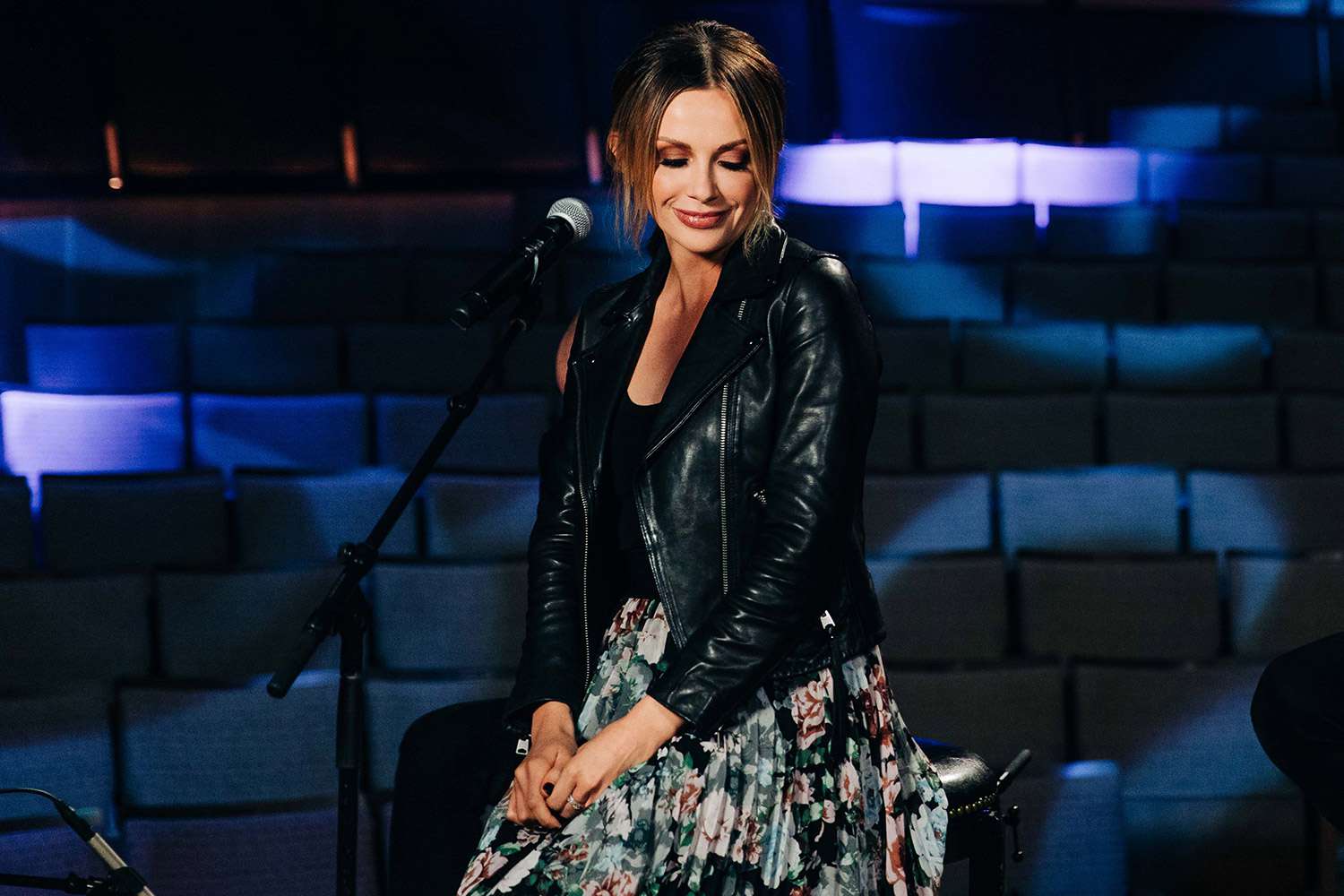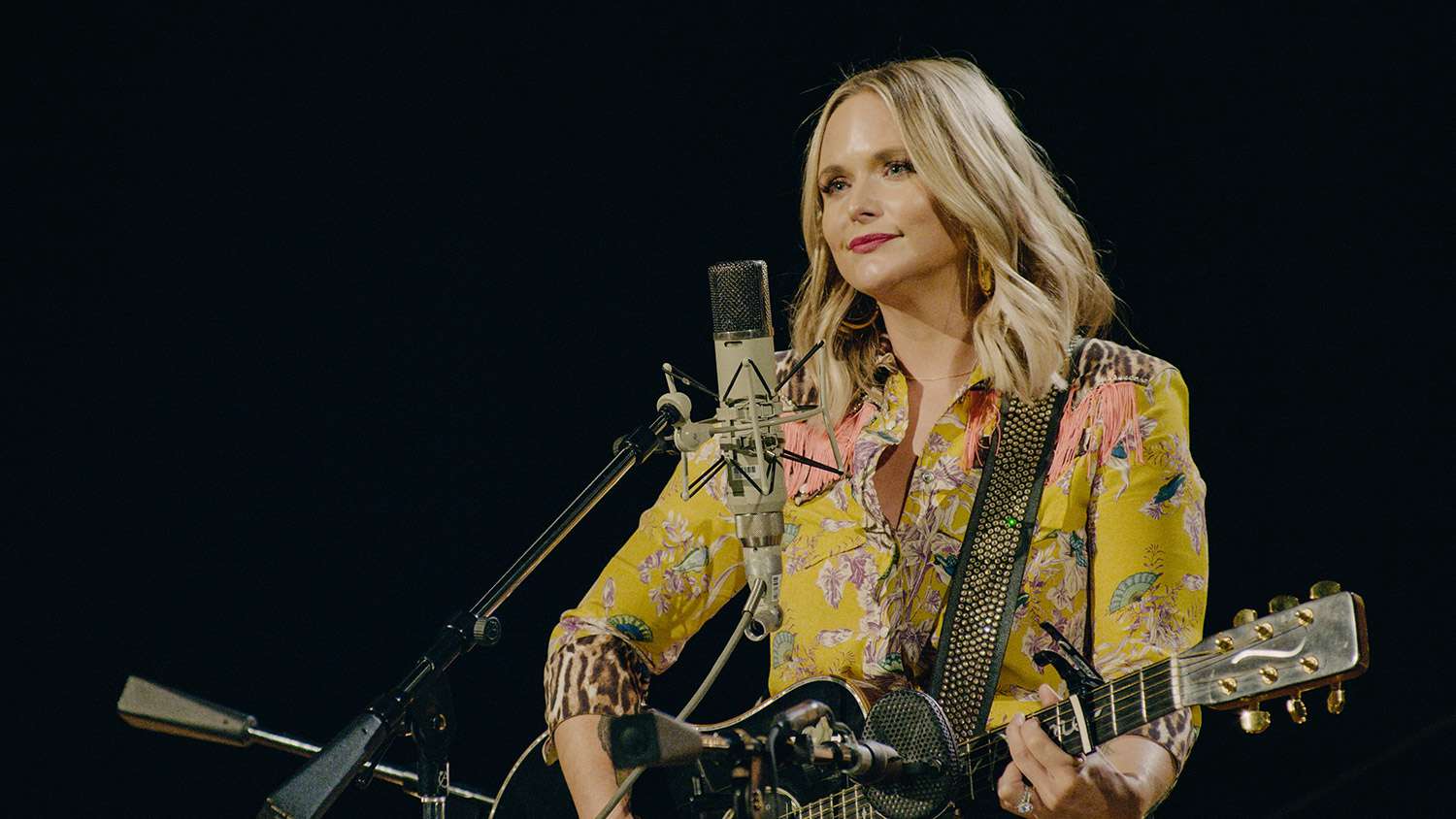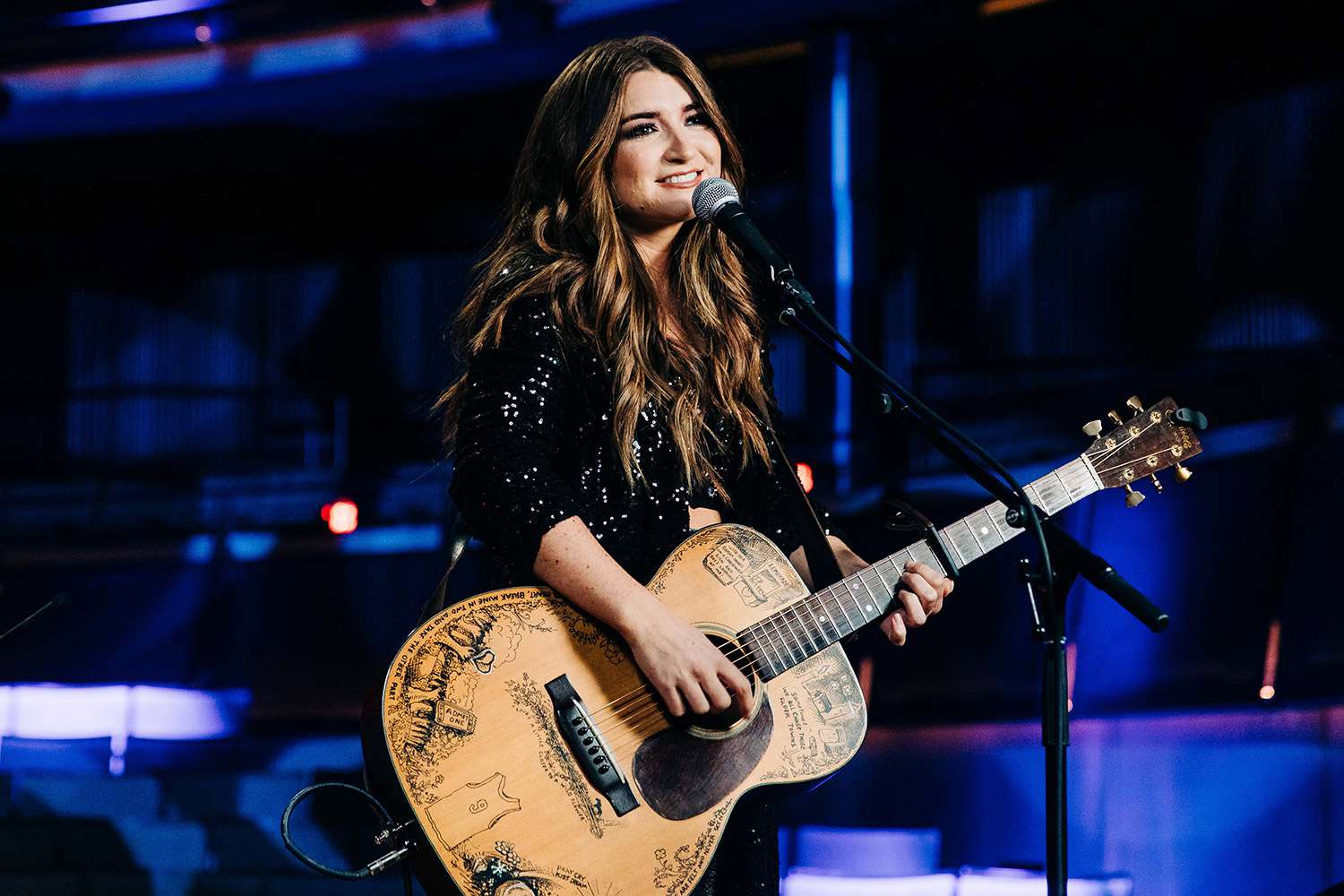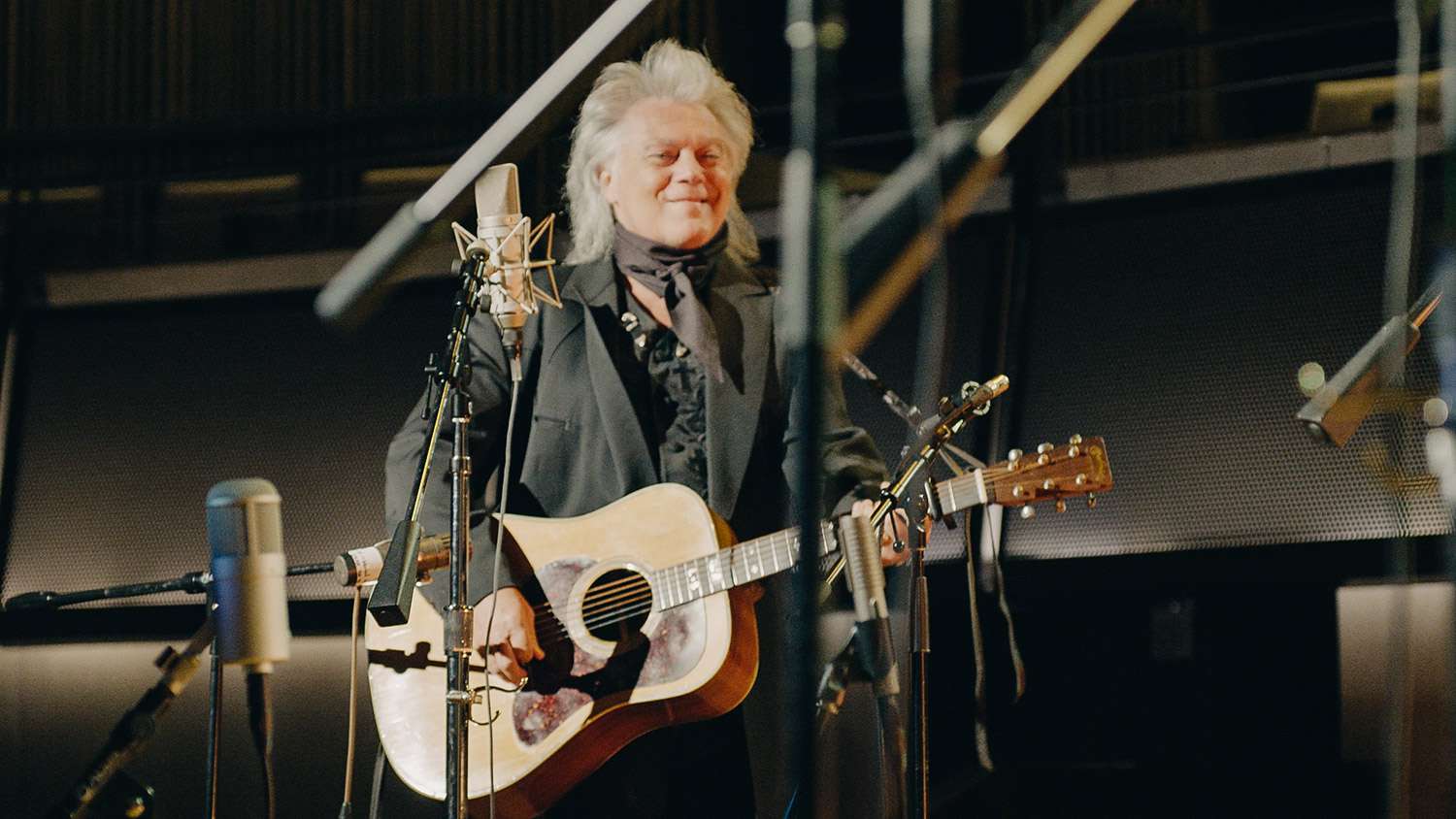Carly Pearce, honoring The Judds
Song: “Why Not Me” (performed during pre-show)
What they mean to me: The Judds were a huge staple of country music when I was growing in Kentucky, and my first concert was Wynonna Judd. Her tone is truly second to none. I belted out songs in my bedroom many nights trying to be her!
What Wynonna Judd has meant to my career: Hearing the distinctiveness of her tone really influenced my discovery of where my voice “sits” best. She has this huskiness to her voice, and I really believe a lot of the reason my tone is a bit husky is because I sang so many of her songs growing up!
Why I picked the song: I used to cover it when I played shows growing up in Kentucky, so it has nostalgic meaning to me. It has every element of what a country song should be: killer melody, killer groove, killer lyrics. That guitar lick is money!
My favorite museum artifacts: When I appeared in a video series for the museum, I got to see two artifacts that will always be the most special to me: Dolly Parton’s original written lyrics to “Jolene” and one of Skeeter Davis’ performance dresses (my grandpa Pearce used to date her!).
1 of 7
Miranda Lambert, honoring songwriter John Prine
Song: “That’s the Way the World Goes ‘Round” performed on John Prine’s guitar custom-made by David Russell Young
What Prine means to me: He set my world on fire — really, all of ours. You would be hard-pressed to find any singer-songwriter in Nashville who wasn’t influenced by his writing.
What Prine has meant to my career: Throughout my 18 years in this industry, John’s songs have been a guiding light that I’ve turned to frequently when I write. He was not only an inspiration but also an aspiration.
Why I picked the song: It’s my favorite John Prine song. I have the lyrics engraved in my firepit at home, and I used it to open my “Livin’ Like Hippies” tour back in 2018. It is a song that continually resonates throughout my life.
What playing Prine’s guitar means to me: It is sacred. To be able to sing this song with his guitar is an honor and a memory I will cherish forever.
My favorite museum artifact: One of my favorites is the original manuscript for “Angel from Montgomery,” which was on display during the 2014 John Prine exhibit. That song is gospel for us songwriters.
2 of 7
Tenille Townes, honoring Dolly Parton
Song: “Coat of Many Colors” (performed during pre-show)
Why I picked the song: It’s my grandparents’ favorite song of all time. Dolly Parton is a hero to me, this was one of the first songs I learned how to play, and I played it with my pépère. This song embodies so much about my grandparents’ character. They are really the kind of people who can make something beautiful out of nothing, never worrying about what anyone else says or thinks about it, and who always see love as the greatest thing.
What Dolly Parton has meant to me: I grew up listening to music with my family, mostly on road trips. Dolly Parton was our favorite. There wasn’t a time that we heard “Coat of Many Colors” when I didn’t see tears welling up in my pépère’s eyes. It always led to stories from them about what it was like growing up on their farms, and my mémère told me about the clothes that her mom made out of scraps of fabric, just like the song. It made me feel like Dolly was singing right to her and singing about a piece of my history.
What Dolly Parton has meant to my career: She is an incredible role model as an artist. As an entertainer, philanthropist, entrepreneur, and most of all to me, a songwriter, she sets the ultimate bar. She gives me courage to tell a story in a song, to talk about how I feel, and to be continually writing.
My favorite museum artifact: Mother Maybelle Carter’s guitar. Every time I walk by it, I smile and think about the foundations of country music that were brought to life by the hands that played that instrument. In so many ways, it is a piece of all of our histories.
3 of 7
Marty Stuart, honoring bluegrass icon Lester Flatt
Songs: “Heavy Traffic Ahead” on Flatt’s Martin D-28 guitar (with Allison Brown on Earl Scruggs’ banjo and Ricky Skaggs on Bill Monroe’s mandolin); “Will the Circle Be Unbroken” (on Monroe’s mandolin with Carlene Carter on Maybelle Carter’s guitar).
What Flatt has meant to my career: If it weren’t for Lester Flatt, I probably wouldn’t have a career. He gave me my job in country music when I was 13 years old. That was a dream job, especially for a kid from Mississippi who was in love with country music.
My experience with the guitar: When I first moved to Nashville, I lived in Lester Flatt’s home, and the guitar was basically out of commission. I asked him if I could adopt the guitar, put strings on it and play it, and he said, “Well, sure you can. Just be careful with it.” It just goes back that deep.
What playing his guitar means to me: To hold it in my hands again was like being with an old friend. It was great to touch it again. I understand why we put instruments behind glass, but when an instrument with such history has the opportunity, after being retired, to be played again, I think that instrument is really happy.
My favorite museum artifact: Perhaps the guitar of Jimmie Rodgers, the father of country music.
4 of 7
Ricky Skaggs, honoring “father of bluegrass” Bill Monroe
Song: “Heavy Traffic Ahead” on Monroe’s Gibson F-5 mandolin (with Marty Stuart on Lester Flatt’s guitar and Allison Brown on Earl Scruggs’ banjo).
Previous experience with the mandolin: When I was 6 years old, I played with Mr. Monroe and his band, the Bluegrass Boys, at the Martha High School in Martha, Kentucky. I’d been playing in the Skaggs Family Band for a year around eastern Kentucky with my dad and mother. During the concert, someone in the audience started yelling out to “let little Ricky Skaggs get up and do a song.” Mr. Monroe didn’t pay any attention to the man and did another song. After that song ended, the man shouted out again. I was so embarrassed I slid down in my seat, but then Mr. Monroe started calling my name, and I had to go up to the stage. He reached down, grabbed me by the arm, lifted me up on stage and asked me what I played. I said, “the mandolin,” and he responded with a chuckle. So, he pulled his mandolin off his shoulder and put it around me. He tightened the strap around me and the mandolin to make sure we both fit each other. I did a song called “Ruby, Are You Mad at Your Man?” Thank God the band knew it. The mandolin that I played in 1959 is the same mandolin that’s in the Country Music Hall of Fame and Museum, and it’s the same one I’m playing on the show. Pretty crazy!
Why I picked the song: Bill Monroe and the Bluegrass Boys recorded “Heavy Traffic Ahead” in 1946 in Columbia Studios in Chicago. It was the first bluegrass song ever recorded. I just felt that it was appropriate to do that song with Lester Flatt’s guitar and Earl Scruggs’ banjo, because they were a part of the Bluegrass Boys at the time it was recorded.
My favorite museum artifacts: Mr. Monroe’s mandolin and Maybelle Carter’s Gibson L-5 guitar. These two instruments helped to create bluegrass music, and with the Carter Family, Maybelle Carter’s guitar helped to create country music.
5 of 7
Brad Paisley, honoring Buck Owens and his guitarist, Don Rich
Song: “Buckaroo” with Paisley on Rich’s 1964 Fender Telecaster and Dan Tyminski on Owens’ red, white and blue American acoustic guitar
What Owens means to me: Buck became a very dear friend to me and one of the most meaningful to my career. He was everything I dreamed he would be and more: eccentric, loud, charming, larger than life, funny and above all, generous.
What Rich means to me: He was part of a very rare breed — one of the pioneers of the Fender Telecaster. Take a listen to Buck’s Carnegie Hall Concert album from 1966, my favorite album of all time. Don is so fiery and so creative on this album — and on everything he did — that it still sounds fresh a half-century later.
What Owens and Rich have meant to my career: More than anything, falling in love with the music of Buck Owens and the Buckaroos widened my understanding of music by introducing me to the very aggressive, really twangy Telecaster sound that Buck championed, along with Don, the resident guitar god in his groundbreaking band. Buck’s sound was always so infectious and his and Don’s two-part harmony was stunning and powerful. Buck’s music sounded like heaven to my ears, and maybe a little bit of hell, too.
6 of 7
Carlene Carter, honoring ‘Mother’ Maybelle Carter
Song: “Will the Circle Be Unbroken” performed on Carter’s Gibson L-5 guitar
What Maybelle Carter means to me: I’ll admit that I’m a huge fan. Of course, the fact that she is my grandmother is ultra-special icing on the cake. She and my great-aunt Sara were the first women admitted into the Hall of Fame and the Carter Family was the first group admitted. They were trailblazers of the first order.
What Carter has meant to my career: Just about everything. If there hadn’t been Mother Maybelle, there wouldn’t have been June Carter, and there wouldn’t have been me! Grandma was so accessible and approachable, and there was nothing I couldn’t ask as far as learning how to play and everything else.
What playing her guitar means: It’s an indescribable thrill and honor that is difficult to express in words. She was really proud of that guitar. She bought it in 1928 for $275, and that was a lot of money, so in a way, she invested in it. It truly has her soul in it, so to be able to connect with my grandmother’s spirit again through that cherished instrument after all this time is kind of overwhelming.
Previous experience with the guitar: Yes, of course, I tried to play it as a child. I thought it was so big and hard to play, but now that I’m (sort of) grown up, it seems to fit very well. I finally grew into it!
Why I picked the song: It’s the obvious choice, especially in the Hall of Fame [where the lyrics are inscribed in the rotunda]. That song is what the Hall of Fame stands for in a certain way.
Favorite museum artifact: My grandmother’s guitar is the obvious choice, and I’m so proud that it occupies such a place of honor. I really can’t get over the fact that people I’m related to in such a deep way — including my daddy, Carl Smith, my mom, my aunts, my grandmother and “Big John” Cash — hold such special places in the museum and in my heart. Sometimes I marvel at the fact that, in some way, I’m part of this. It’s more special than I can describe.
7 of 7
Source: Read Full Article






